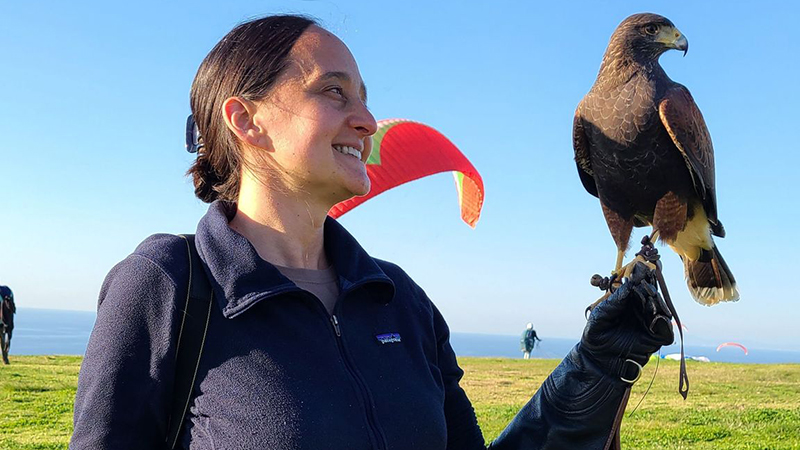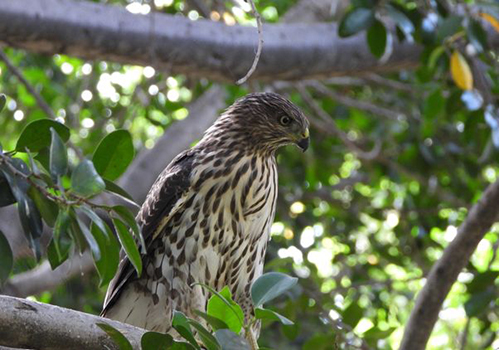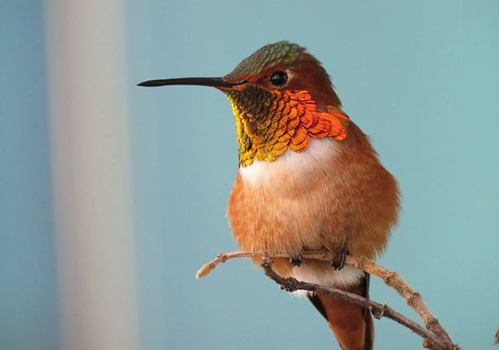UCLA Chief Sustainability Officer Nurit Katz shares her love for nature
Share This Article

By Jonathan Riggs, UCLA
Don’t ask Nurit Katz why she loves birds.
“There’s just a joy that you find in things that isn’t necessarily explainable,” says Katz, UCLA’s inaugural chief sustainability officer. “Let’s skip that one.”
Her efficiency is both admirable and necessary: In addition to her full-time job, Katz is also a current UCLA doctoral student in ecology and evolutionary biology, which will earn her triple Bruin status. (“Triple” might be an understatement. Not only does Katz already hold master’s degrees in business administration and public policy from UCLA, she also served as executive officer for UCLA Facilities Management and is an instructor at UCLA Extension.)
So it’s understandable that Katz is less eager to opine on birds and more eager to actually study and work with them. That includes a pair of great horned owls who have been nesting on campus for many years.
Back in 2018, one of the pair’s owlets got stranded in a busy area of campus. After Katz assisted with the safe reunion of the owlet with its parents, she gained a connection to the Los Angeles Raptor Study, directed by Daniel Cooper, who graduated from UCLA with a doctorate from the same program in which Katz is now a student.

The L.A. Raptor Study engages volunteers across the city to monitor the nests of hawks, owls and falcons to help biologists gauge how these birds are adapting to the urban environment. Becoming the study’s outreach coordinator, Katz found her involvement with and interest in birds deepening, especially during the COVID-19 pandemic, when participating in this community science program was a safe outdoor option.
Today, she’s both a wildlife campus contact — reach out to her if you see a UCLA bird that may need assistance — as well as the faculty advisor for the Bruin Birding Club, UCLA’s Audubon on Campus chapter that leads free weekly campus bird walks (and can lend you binoculars if you need to borrow a pair). Because if you’re looking to observe birds in particular, or any biodiversity in general, UCLA’s campus is a wonderful place to do it. (And has been for decades, as this 1947 publication attests.)
Although more than 140 species have been spotted in the UCLA Mildred E. Mathias Botanical Garden alone, any location on campus can offer spectacular sightings. That includes UCLA’s Hummingbird Canyon, between Franz Hall and the Geology Building, which is a habitat revitalization project spearheaded by students in the Bruin Birding Club and following the example set by an especially memorable community member called the “hummingbird whisperer.”

After all, Katz says, research has shown there are health benefits to be gained from experiencing nature, especially through birding. Circling back to the original question, she muses on the way she first became interested in birds, including on UCLA’s campus in particular. While helping to care for her grandmother, who loved hummingbirds, Katz, an experienced wildlife photographer, started to focus more and more on getting better shots of hummingbirds she could show her.
“When I started sharing that photography with people, I found that it touched them in ways no narrative or graph could. There’s just something innate in all of us that connects to nature,” Katz says. “Everyone can think about birds and ecosystems through their own lens and in terms of what they do for us — the billions of dollars of economic activity from pollinators alone. But what’s most important is that love, that sense of connectedness to life they represent.”
And when it comes to the question of why everyone should care about birds, Katz poses a broader question of her own.
“Birds can sometimes be the most accessible, visible part of nature, but the question might be, ‘Why should you care about biodiversity? Why care about nature?’” she says. “And the answer to that is something the poet Gary Snyder said: ‘Nature’s not a place to visit. It is home.’”
